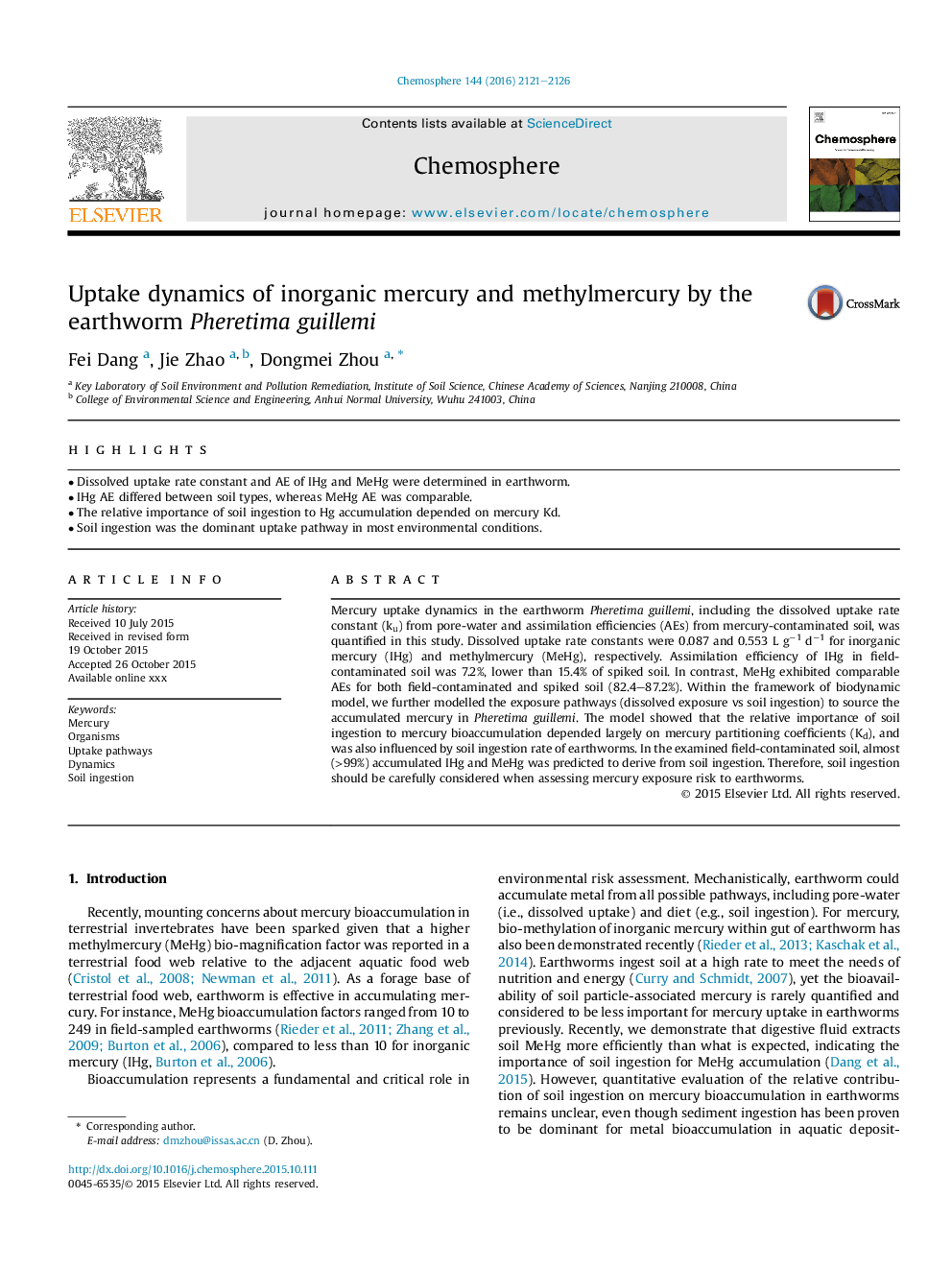| Article ID | Journal | Published Year | Pages | File Type |
|---|---|---|---|---|
| 6307291 | Chemosphere | 2016 | 6 Pages |
Abstract
Mercury uptake dynamics in the earthworm Pheretima guillemi, including the dissolved uptake rate constant (ku) from pore-water and assimilation efficiencies (AEs) from mercury-contaminated soil, was quantified in this study. Dissolved uptake rate constants were 0.087 and 0.553Â LÂ gâ1Â dâ1 for inorganic mercury (IHg) and methylmercury (MeHg), respectively. Assimilation efficiency of IHg in field-contaminated soil was 7.2%, lower than 15.4% of spiked soil. In contrast, MeHg exhibited comparable AEs for both field-contaminated and spiked soil (82.4-87.2%). Within the framework of biodynamic model, we further modelled the exposure pathways (dissolved exposure vs soil ingestion) to source the accumulated mercury in Pheretima guillemi. The model showed that the relative importance of soil ingestion to mercury bioaccumulation depended largely on mercury partitioning coefficients (Kd), and was also influenced by soil ingestion rate of earthworms. In the examined field-contaminated soil, almost (>99%) accumulated IHg and MeHg was predicted to derive from soil ingestion. Therefore, soil ingestion should be carefully considered when assessing mercury exposure risk to earthworms.
Related Topics
Life Sciences
Environmental Science
Environmental Chemistry
Authors
Fei Dang, Jie Zhao, Dongmei Zhou,
